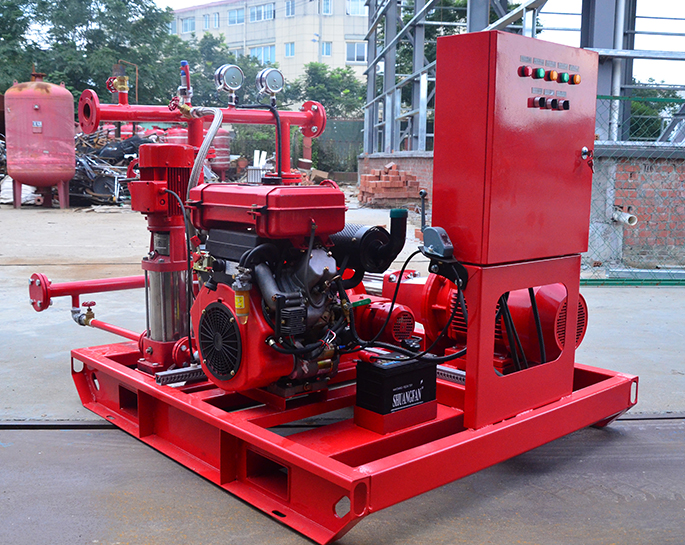What are the challenges in maintaining fire pump sets in remote or inaccessible locations?
May 10, 2024
Share:
Maintaining fire pump sets in remote or inaccessible locations presents several unique challenges:
1. **Accessibility**: Accessing remote or inaccessible locations can be difficult and costly. Remote areas may lack proper roads or infrastructure, making it challenging to transport equipment and personnel to the site.
2. **Logistics**: Procuring spare parts, tools, and equipment can be a logistical challenge in remote areas. Transportation may be limited, and delivery times can be prolonged, affecting maintenance schedules and response times.
3. **Environmental Factors**: Remote locations often face harsh environmental conditions such as extreme temperatures, high humidity, or corrosive atmospheres. These conditions can accelerate equipment degradation and require more frequent maintenance.
4. **Power Supply**: Remote areas may lack a reliable power supply, requiring fire pump sets to rely on generators or alternative power sources. Ensuring the availability of fuel and maintaining generator reliability adds complexity to maintenance efforts.
5. **Technical Expertise**: Finding qualified personnel with the necessary technical expertise to maintain fire pump sets can be difficult in remote locations. Training local staff or arranging for specialized support from afar may be necessary.
6. **Communication**: Limited communication infrastructure in remote areas can hinder coordination between maintenance teams and support staff. This can lead to delays in diagnosing issues and obtaining assistance.
7. **Safety Concerns**: Remote locations may pose additional safety risks for maintenance personnel due to factors such as rugged terrain, wildlife, or isolation. Implementing adequate safety protocols and emergency response plans is essential.
8. **Cost**: Maintaining fire pump sets in remote or inaccessible locations can be costly due to the need for specialized equipment, transportation, and personnel. Budget constraints may limit the frequency of maintenance activities, increasing the risk of equipment failure.
Addressing these challenges requires careful planning, resource allocation, and collaboration between stakeholders, including local authorities, maintenance teams, suppliers, and support organizations. Implementing preventive maintenance strategies, leveraging technology for remote monitoring, and building resilient infrastructure can help mitigate the impact of these challenges and ensure the reliability of fire protection systems in remote areas.

1. **Accessibility**: Accessing remote or inaccessible locations can be difficult and costly. Remote areas may lack proper roads or infrastructure, making it challenging to transport equipment and personnel to the site.
2. **Logistics**: Procuring spare parts, tools, and equipment can be a logistical challenge in remote areas. Transportation may be limited, and delivery times can be prolonged, affecting maintenance schedules and response times.
3. **Environmental Factors**: Remote locations often face harsh environmental conditions such as extreme temperatures, high humidity, or corrosive atmospheres. These conditions can accelerate equipment degradation and require more frequent maintenance.
4. **Power Supply**: Remote areas may lack a reliable power supply, requiring fire pump sets to rely on generators or alternative power sources. Ensuring the availability of fuel and maintaining generator reliability adds complexity to maintenance efforts.
5. **Technical Expertise**: Finding qualified personnel with the necessary technical expertise to maintain fire pump sets can be difficult in remote locations. Training local staff or arranging for specialized support from afar may be necessary.
6. **Communication**: Limited communication infrastructure in remote areas can hinder coordination between maintenance teams and support staff. This can lead to delays in diagnosing issues and obtaining assistance.
7. **Safety Concerns**: Remote locations may pose additional safety risks for maintenance personnel due to factors such as rugged terrain, wildlife, or isolation. Implementing adequate safety protocols and emergency response plans is essential.
8. **Cost**: Maintaining fire pump sets in remote or inaccessible locations can be costly due to the need for specialized equipment, transportation, and personnel. Budget constraints may limit the frequency of maintenance activities, increasing the risk of equipment failure.
Addressing these challenges requires careful planning, resource allocation, and collaboration between stakeholders, including local authorities, maintenance teams, suppliers, and support organizations. Implementing preventive maintenance strategies, leveraging technology for remote monitoring, and building resilient infrastructure can help mitigate the impact of these challenges and ensure the reliability of fire protection systems in remote areas.







